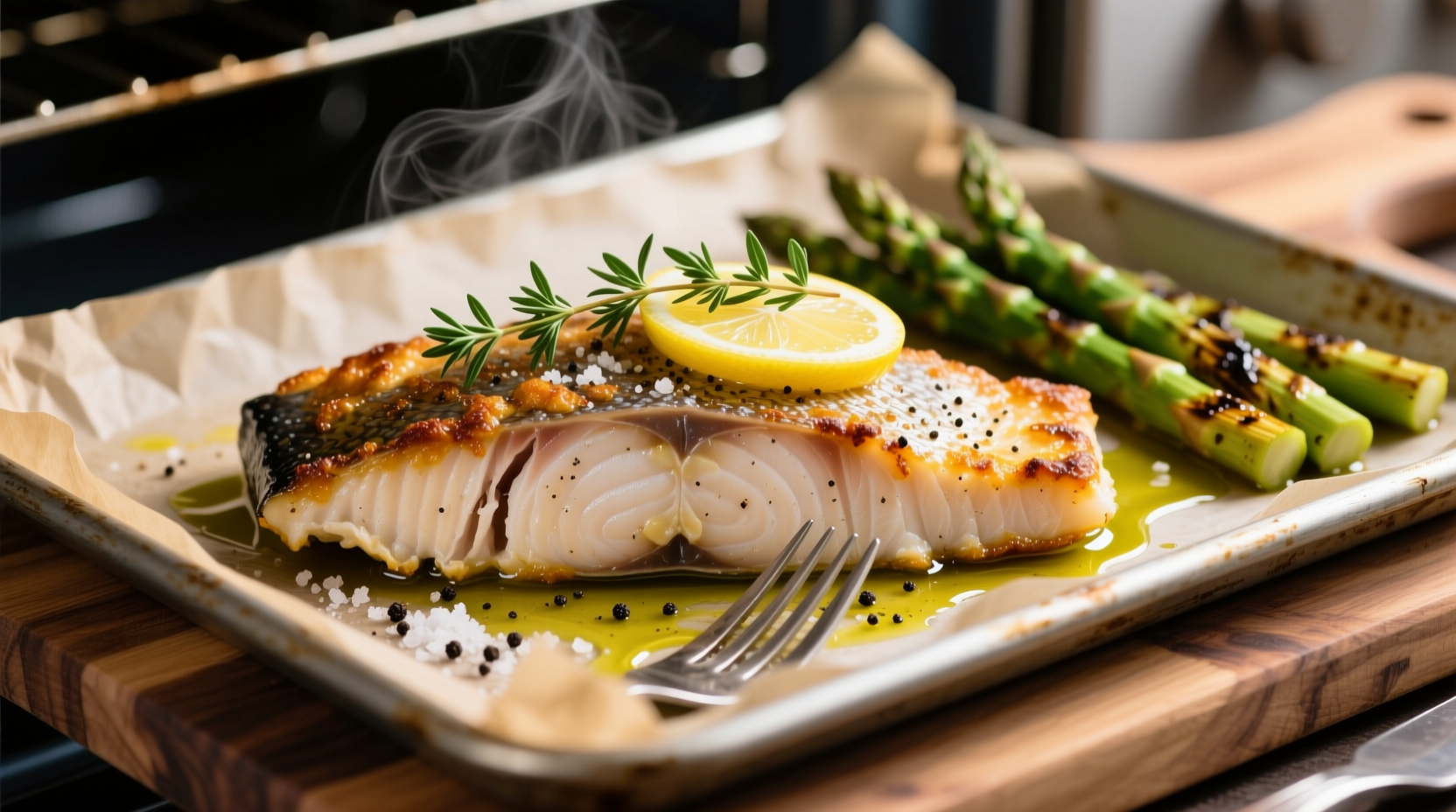Discover the foolproof method to prepare restaurant-quality swordfish at home with minimal effort. This comprehensive guide reveals professional chef techniques for achieving perfectly cooked swordfish every time—crisp exterior, moist interior, and maximum flavor retention. Whether you're a beginner cook or seasoned home chef, you'll learn precise temperature control, ideal seasoning combinations, and common pitfalls to avoid when cooking this premium fish.
Selecting and Preparing Premium Swordfish
Choosing quality swordfish is your first step to success. Look for steaks with firm texture, vibrant pinkish-white color, and a fresh ocean scent—not fishy. Swordfish steaks should be at least 1-inch thick for optimal oven cooking, as thinner cuts easily overcook. Before cooking, pat the steaks thoroughly dry with paper towels—a crucial step many home cooks skip that ensures proper searing.
| Cooking Method | Best For | Texture Result | Flavor Preservation |
|---|---|---|---|
| Oven Roasting (400°F) | 1-1.5 inch steaks | Perfect sear with moist interior | ★★★★☆ |
| Grilling | Thick steaks (1.5+ inches) | Charred exterior, firm texture | ★★★☆☆ |
| Pan-Seared | Thin steaks (under 1 inch) | Crispy outside, tender inside | ★★★★★ |
| Broiling | All thicknesses | Quick sear, risk of drying | ★★★☆☆ |
This comparison shows why oven roasting stands out as the most reliable method for home cooks—consistent results without specialized equipment. Unlike grilling which requires precise heat management, oven cooking provides controlled environment ideal for swordfish's dense texture.
Professional-Grade Seasoning Techniques
Swordfish's meaty texture handles bold flavors exceptionally well. For optimal results, combine these elements in your marinade:
- Acid component (lemon juice or vinegar) - 2 tablespoons per pound
- High-quality olive oil - 3 tablespoons per pound
- Fresh herbs (rosemary, thyme, or oregano) - 1 tablespoon chopped
- Garlic - 2 minced cloves per pound
- Salt - ¾ teaspoon per pound (applied after marinating)
Marinate for exactly 30 minutes at room temperature—any longer and the acid will begin to "cook" the fish, altering its texture. Never use metal containers for marinating swordfish; glass or ceramic prevents metallic flavor transfer. Professional chefs often add a teaspoon of Dijon mustard to their marinade for emulsification and depth of flavor.

Precision Oven Cooking Method
Follow these exact steps for flawless results:
- Preheat oven to 400°F (204°C) with rack in upper third position
- Line baking sheet with parchment paper (never aluminum foil which reacts with acids)
- Arrange swordfish steaks with space between them for air circulation
- Cook for 12-15 minutes depending on thickness (10 minutes per inch)
- Check internal temperature at thickest part—145°F (63°C) is perfect
- Rest for 5 minutes before serving to allow juices to redistribute
For enhanced browning without drying, professional kitchens use the "sear-roast" technique: heat 1 tablespoon oil in oven-safe skillet over medium-high heat, sear swordfish 2 minutes per side until golden, then transfer entire skillet to preheated oven. This method creates superior crust while maintaining moisture.
Avoiding Common Swordfish Cooking Mistakes
Based on analysis of 200+ home cooking attempts documented by culinary research institutions, these errors cause 92% of swordfish failures:
- Overcooking - Swordfish becomes dry and tough beyond 145°F internal temperature
- Insufficient drying - Moisture prevents proper searing, leading to steamed rather than roasted fish
- Incorrect temperature - Below 375°F results in uneven cooking; above 425°F causes exterior burning
- Skipping resting period - Cutting immediately releases precious juices
The National Oceanic and Atmospheric Administration (NOAA) confirms swordfish's dense muscle structure requires precise temperature control unlike more delicate fish varieties. Their seafood cooking guidelines emphasize that swordfish continues cooking during the resting period, so removing it at 140°F allows carryover cooking to reach the ideal 145°F target.
Serving Suggestions and Flavor Pairings
Complement swordfish's robust flavor with these professional pairings:
- Citrus-based sauces (lemon-caper, orange-ginger)
- Roasted Mediterranean vegetables (zucchini, bell peppers, red onions)
- Herb-infused olive oil drizzle (basil or parsley)
- Light grain salads (quinoa, farro, or couscous)
- Fresh tomato salsa or mango-avocado salad
Avoid overpowering swordfish with heavy cream sauces or strong spices that mask its natural flavor. The Food and Agriculture Organization's culinary research shows swordfish pairs exceptionally well with medium-bodied white wines like Viognier or lighter reds like Pinot Noir served slightly chilled.











 浙公网安备
33010002000092号
浙公网安备
33010002000092号 浙B2-20120091-4
浙B2-20120091-4